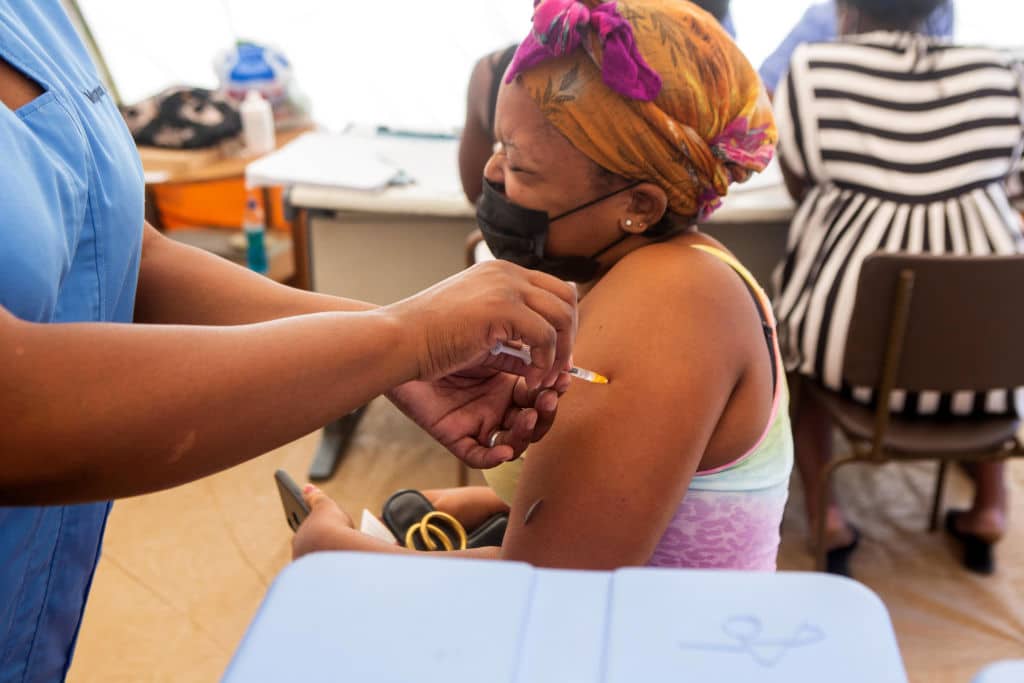TOPLINE
An advisory panel to the Food and Drug Administration on Tuesday recommended the agency push to field new Covid-19 booster shots targeting the highly contagious omicron variant, a move some hope will offer a boost in the fight against the rapidly evolving coronavirus—but the most vulnerable populations shouldn’t wait till the fall to get an updated shot, experts say.
KEY FACTS
The FDA advisory committee voted 19 to 2 to recommend a switchover to new booster shots for Omicron, though several steps remain before updated shots will become available, including FDA emergency use authorization.
And the Centers for Disease Control recommends adults ages 50 years and older, as well as those 12 years and older who are immunocompromised, receive a second booster that’s available now—and not wait for the Omicron-specific boosters this fall.
But not everyone needs to rush to get a second shot of the current booster, Dr. Amesh Adalja, a senior scholar at the Johns Hopkins Center for Health Security, told Forbes, adding those without high-risk conditions 60 years old and younger can probably wait for an Omicron-specific booster to become available.
People who have recently had Covid who are not at high risk for severe illness don’t need to get another booster right away either, as they’re likely protected from severe disease for several months, Adalja noted.
High-risk people, however, regardless of previous infections, shouldn’t hold out for an updated second booster shot, as they are at a greater risk for severe illness, Adalja said.
CRUCIAL QUOTE
“It all boils down to risk and what you’re trying to achieve with the vaccine. But I think boosting healthy people to prevent mild disease transiently is not a strategy,” Adalja said, adding original coronavirus vaccines have done “really well” at preventing severe illness, hospitalization and death.
KEY BACKGROUND
Both Pfizer and Moderna released clinical trial data this month showing Omicron-specific bivalent shots—a type of vaccine with two different targets, the original coronavirus strain and the omicron variant—produced strong antibody responses against the variant. Several companies, including Johnson & Johnson and Novavax, began developing the new shots after data showed new Covid strains are better at evading immunity both from vaccines and previous coronavirus infections. Peter Marks, director of the FDA’s Center for Biologics Evaluation and Research, warned during Tuesday’s meeting that several factors such as winter weather, a rapidly evolving virus and decreasing immunity could lead to a rise in serous Covid infections. The meeting comes after the World Health Organization said earlier this month updated vaccines might be necessary to strengthen immune protection against emerging variants. But the rapidly changing nature of the Omicron strain poses a challenge for vaccine developers attempting to target the most predominant variant, Adalja noted.
SURPRISING FACT
Omicron BA.4 and BA.5 combined became the dominant coronavirus strains in the U.S. last week, accounting for roughly 52% of all Covid cases, up from roughly 37% the week before that, according to estimates from the Centers for Disease Control and Prevention. The modeling data may be subject to changes as more information becomes available.
WHAT TO WATCH FOR
Omicron-specific Covid boosters available in the fall. During Tuesday’s meeting, the FDA said it would need to endorse the new shots in early July to make them available in October. A spokesperson for Moderna said during Tuesday’s hearing the company could have a bivalent vaccine targeting Omicron ready by July, while a vaccine targeting subvariants BA.4 and BA.5 could be available by late October.
